|
AP Learning Objective:
Explain the various factors that contributed to the Union victory in the Civil War. Learning Target: I can discuss the key military and political turning points of the Civil War. Critical Vocabulary: Nat Turner’s Rebellion, Underground Railroad, Harriett Tubman, “Fire-Eaters,” Stephen A. Douglas, Compromise of 1850, Fugitive Slave Act, Harriet Beecher Stowe, Uncle Tom’s Cabin, Ostend Manifesto, Kansas-Nebraska Act, New England Emigrant Aid Company, “Bleeding Kansas,” Republican Party, Dred Scott Decision, Abraham Lincoln, Freeport Doctrine, John Brown, Pottawatomie Creek, Lecompton Constitution, Harpers Ferry, Constitutional Union Party, Election of 1860, Crittenden Compromise, Confederate States of America, Jefferson Davis, First Inaugural Address, Fort Sumter Today's Agenda:
Homework: The Civil War Reading
AP Learning Objective:
Explain the various factors that contributed to the Union victory in the Civil War. Learning Target: I can discuss the key military and political turning points of the Civil War. Critical Vocabulary: Nat Turner’s Rebellion, Underground Railroad, Harriett Tubman, “Fire-Eaters,” Stephen A. Douglas, Compromise of 1850, Fugitive Slave Act, Harriet Beecher Stowe, Uncle Tom’s Cabin, Ostend Manifesto, Kansas-Nebraska Act, New England Emigrant Aid Company, “Bleeding Kansas,” Republican Party, Dred Scott Decision, Abraham Lincoln, Freeport Doctrine, John Brown, Pottawatomie Creek, Lecompton Constitution, Harpers Ferry, Constitutional Union Party, Election of 1860, Crittenden Compromise, Confederate States of America, Jefferson Davis, First Inaugural Address, Fort Sumter Today's Agenda:
Homework: The Civil War Reading AP Learning Objective:
Explain the various factors that contributed to the Union victory in the Civil War. Learning Target: I can discuss the key military and political turning points of the Civil War. Critical Vocabulary: Nat Turner’s Rebellion, Underground Railroad, Harriett Tubman, “Fire-Eaters,” Stephen A. Douglas, Compromise of 1850, Fugitive Slave Act, Harriet Beecher Stowe, Uncle Tom’s Cabin, Ostend Manifesto, Kansas-Nebraska Act, New England Emigrant Aid Company, “Bleeding Kansas,” Republican Party, Dred Scott Decision, Abraham Lincoln, Freeport Doctrine, John Brown, Pottawatomie Creek, Lecompton Constitution, Harpers Ferry, Constitutional Union Party, Election of 1860, Crittenden Compromise, Confederate States of America, Jefferson Davis, First Inaugural Address, Fort Sumter Today's Agenda:
Homework: The Civil War Reading AP Learning Objective:
Explain the various factors that contributed to the Union victory in the Civil War. Learning Target: I can discuss the key military and political turning points of the Civil War. Critical Vocabulary: Nat Turner’s Rebellion, Underground Railroad, Harriett Tubman, “Fire-Eaters,” Stephen A. Douglas, Compromise of 1850, Fugitive Slave Act, Harriet Beecher Stowe, Uncle Tom’s Cabin, Ostend Manifesto, Kansas-Nebraska Act, New England Emigrant Aid Company, “Bleeding Kansas,” Republican Party, Dred Scott Decision, Abraham Lincoln, Freeport Doctrine, John Brown, Pottawatomie Creek, Lecompton Constitution, Harpers Ferry, Constitutional Union Party, Election of 1860, Crittenden Compromise, Confederate States of America, Jefferson Davis, First Inaugural Address, Fort Sumter Today's Agenda:
Homework: The Civil War Reading AP Learning Objective:
Explain the various factors that contributed to the Union victory in the Civil War. Learning Target: I can discuss the key military and political turning points of the Civil War. Critical Vocabulary: Nat Turner’s Rebellion, Underground Railroad, Harriett Tubman, “Fire-Eaters,” Stephen A. Douglas, Compromise of 1850, Fugitive Slave Act, Harriet Beecher Stowe, Uncle Tom’s Cabin, Ostend Manifesto, Kansas-Nebraska Act, New England Emigrant Aid Company, “Bleeding Kansas,” Republican Party, Dred Scott Decision, Abraham Lincoln, Freeport Doctrine, John Brown, Pottawatomie Creek, Lecompton Constitution, Harpers Ferry, Constitutional Union Party, Election of 1860, Crittenden Compromise, Confederate States of America, Jefferson Davis, First Inaugural Address, Fort Sumter Today's Agenda:
Homework: The Civil War Reading AP Learning Objective:
Explain how regional differences related to slavery caused tension in the years leading up to the Civil War. Learning Target: I can summarize the events that led to the Civil War, & I can evaluate the degree to which each contributed to the conflict. Critical Vocabulary: Nat Turner’s Rebellion, Underground Railroad, Harriett Tubman, “Fire-Eaters,” Stephen A. Douglas, Compromise of 1850, Fugitive Slave Act, Harriet Beecher Stowe, Uncle Tom’s Cabin, Ostend Manifesto, Kansas-Nebraska Act, New England Emigrant Aid Company, “Bleeding Kansas,” Republican Party, Dred Scott Decision, Abraham Lincoln, Freeport Doctrine, John Brown, Pottawatomie Creek, Lecompton Constitution, Harpers Ferry, Constitutional Union Party, Election of 1860, Crittenden Compromise, Confederate States of America, Jefferson Davis, First Inaugural Address, Fort Sumter Today's Agenda:
Homework: On the Brink of War Reading AP Learning Objective:
Explain how regional differences related to slavery caused tension in the years leading up to the Civil War. Learning Target: I can summarize the events that led to the Civil War, & I can evaluate the degree to which each contributed to the conflict. Critical Vocabulary: Nat Turner’s Rebellion, Underground Railroad, Harriett Tubman, “Fire-Eaters,” Stephen A. Douglas, Compromise of 1850, Fugitive Slave Act, Harriet Beecher Stowe, Uncle Tom’s Cabin, Ostend Manifesto, Kansas-Nebraska Act, New England Emigrant Aid Company, “Bleeding Kansas,” Republican Party, Dred Scott Decision, Abraham Lincoln, Freeport Doctrine, John Brown, Pottawatomie Creek, Lecompton Constitution, Harpers Ferry, Constitutional Union Party, Election of 1860, Crittenden Compromise, Confederate States of America, Jefferson Davis, First Inaugural Address, Fort Sumter Today's Agenda:
Homework: On the Brink of War Reading AP Learning Objective:
Explain how regional differences related to slavery caused tension in the years leading up to the Civil War. Learning Target: I can summarize the events that led to the Civil War, & I can evaluate the degree to which each contributed to the conflict. Critical Vocabulary: Nat Turner’s Rebellion, Underground Railroad, Harriett Tubman, “Fire-Eaters,” Stephen A. Douglas, Compromise of 1850, Fugitive Slave Act, Harriet Beecher Stowe, Uncle Tom’s Cabin, Ostend Manifesto, Kansas-Nebraska Act, New England Emigrant Aid Company, “Bleeding Kansas,” Republican Party, Dred Scott Decision, Abraham Lincoln, Freeport Doctrine, John Brown, Pottawatomie Creek, Lecompton Constitution, Harpers Ferry, Constitutional Union Party, Election of 1860, Crittenden Compromise, Confederate States of America, Jefferson Davis, First Inaugural Address, Fort Sumter Today's Agenda:
Homework: On the Brink of War Reading |
A life is not important except in the impact it has on other lives.
-Jackie Robinson AnnouncementsMarch 6: Bullitt Day
March 30-April 3: Spring Break ResourcesArchives
March 2020
|

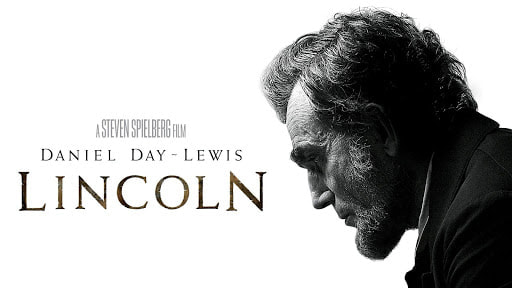
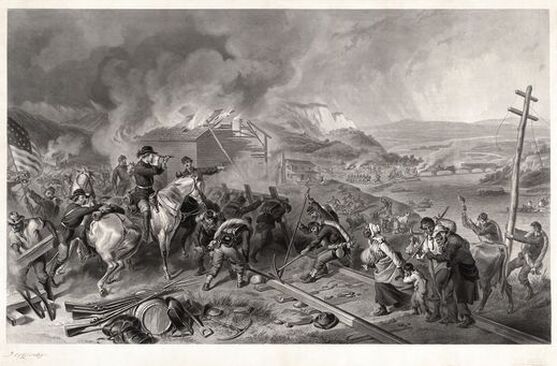
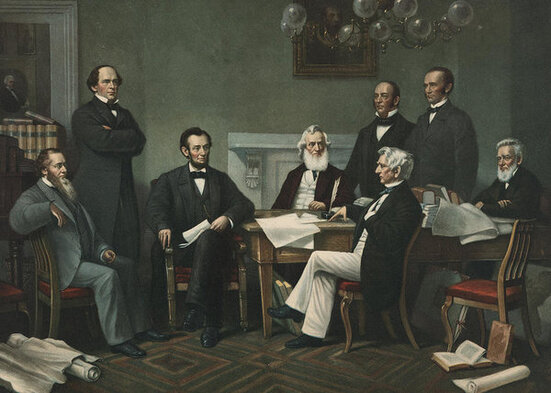
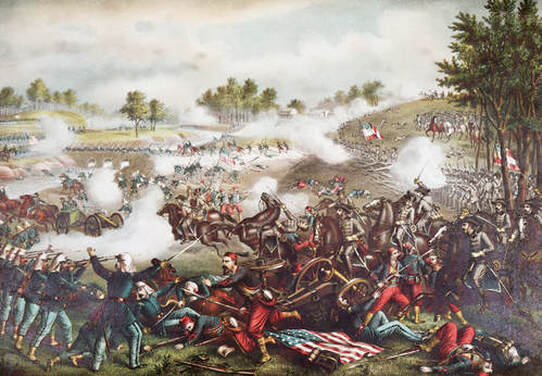

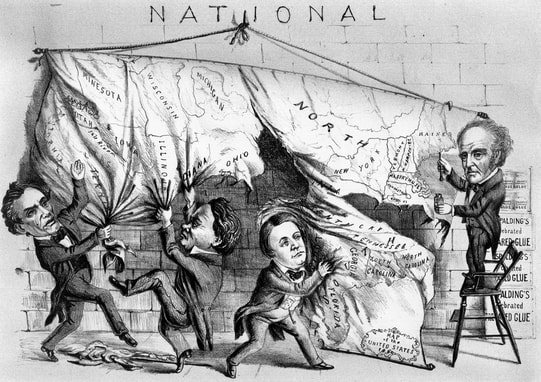
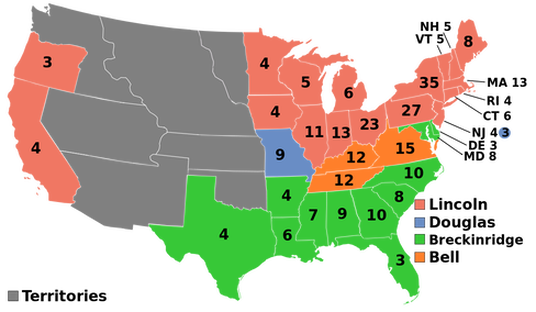
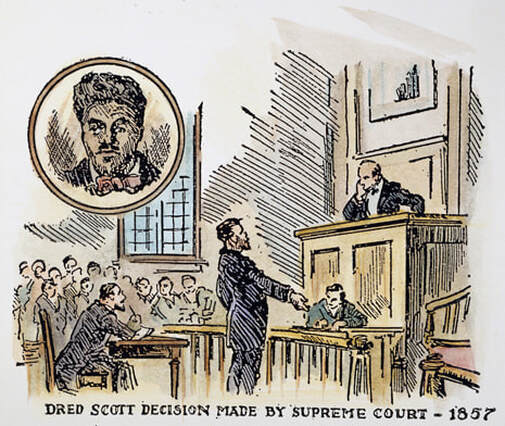
 RSS Feed
RSS Feed
